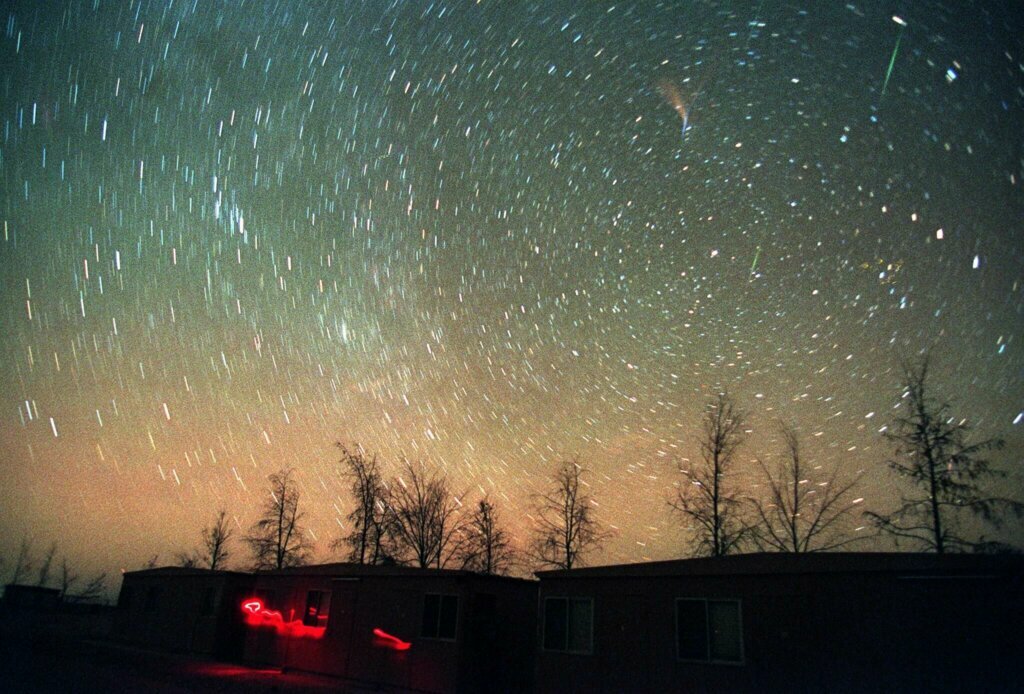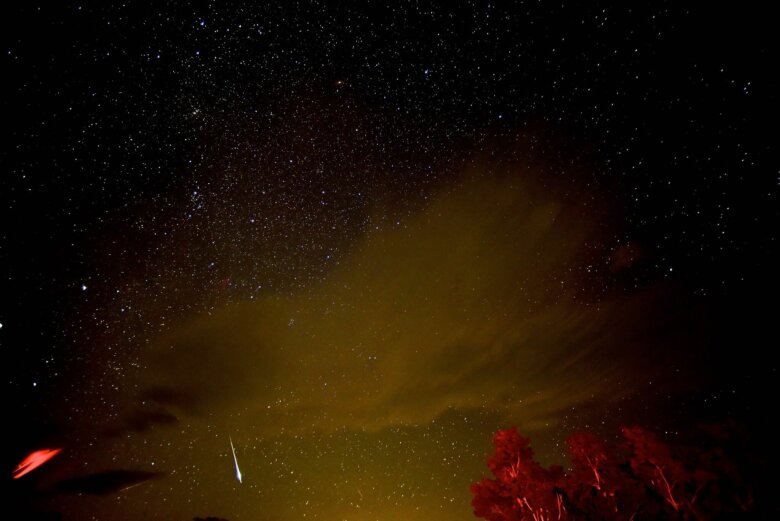
Are you a night owl and/or an early riser and like to look at the night sky? At midnight into the hours before dawn Tuesday is just the thing for you as the Leonid meteor shower is expected to peak during that time frame.
The Leonids were first seen in 902 A.D. and “storm” every 33 years, producing hundreds to thousands of meteors an hour. The last Leonid storm was in 2001.
This year, a dark sky site should produce 10 to 15 Leonid meteors an hour.
Each year at this time, Earth encounters a debris stream of cometary particles made by the comet Temple-Tuttle as it orbits the sun. As Earth moves in its orbit around the sun, it collides with this debris stream, and the particles hit our atmosphere at 45 miles per second (about 155,000 mph) to become “shooting or falling stars.” Earth encounters about a dozen major meteor showers a year.
The best place to see the Leonids is a dark sky location that is away from lights and obstructions such as trees and buildings. This will give you the best chance to see the peak of 10 to 15 meteors an hour.

If you’re a city dweller, you still may see the brightest Leonids, as long as you’re not staring into a streetlight or nestled in among tall buildings.
Out in the country or along the beach is the best place to be. The moon will be out of the sky, so it will not affect the ability to see this year’s Leonids.
You do not need any equipment or know how to enjoy this meteor sky show. Just find a place where you can put a lounge chair or blanket to see the sky toward the east and overhead.
Starting after midnight, when the constellation Leo is starting to rise above the horizon, look toward the east. A meteor that is part of the shower can be traced back to the constellation Leo, which will be completely above the eastern horizon a little after 1 a.m.
As the night wears on, Leo will rise higher in the sky and move toward the west due to Earth’s rotation.
Sporadic meteors that are not part of the shower can be normally seen during the night as well.
The key to watching the shower is being comfortable — in other words, warm. The Leonids can appear anywhere in the sky, but looking at least halfway up in the sky facing the east gives you the widest viewing area; this is where the lounge chair, sleeping bag or blanket come in handy.
Enjoy the shower with family, friends or your significant other. Some music, food and beverages are an added plus.
If you’re up before dawn also check out bright Venus and Mercury in the east. Venus is the brighter and higher of the two.
The weather will be clear according to forecasts, so enjoy this celestial break from 2020.
Follow my daily blog to keep up with the latest news in astronomy and space exploration. You can email me at skyguyinva@gmail.com.







